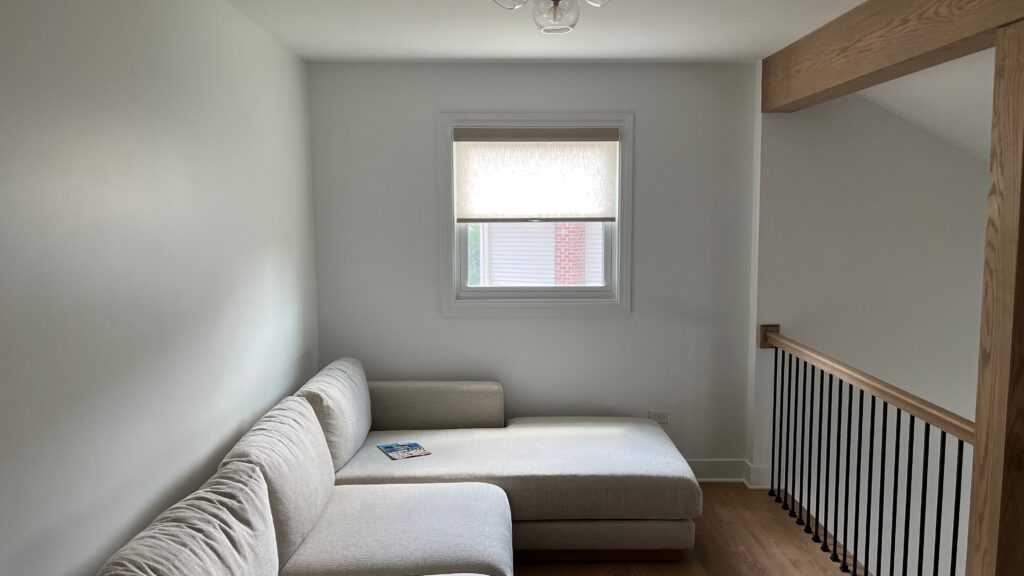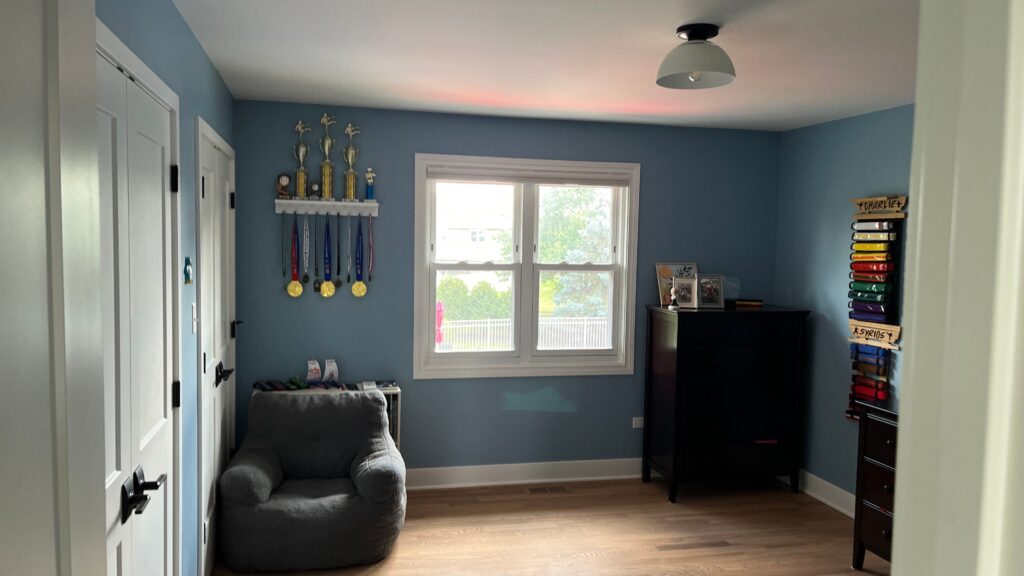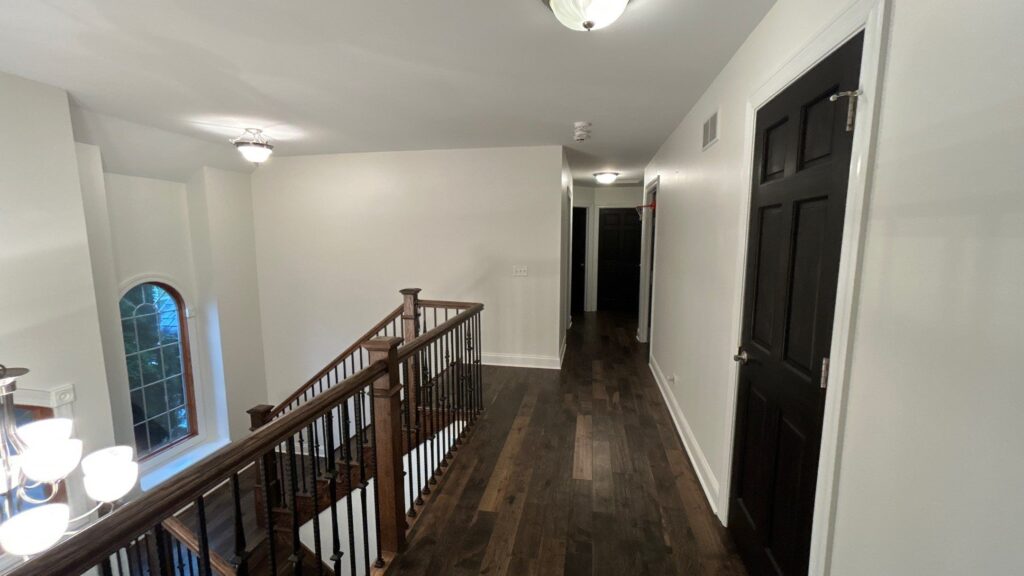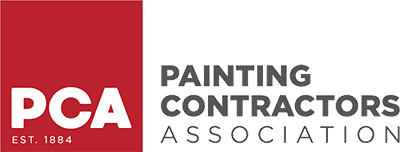Indoor humidity directly impacts how paint dries and cures.
When the moisture in the air is high, water in latex paints evaporates more slowly, and the chemical curing process in oil-based paints is altered. The result? Longer drying times, uneven finishes, blistering, or even complete paint failure.
For most interior painting projects, the ideal indoor humidity range is 40–50% relative humidity (RH). Go much higher, and you risk tacky surfaces and adhesion problems. Go much lower, and the paint may dry too fast, leaving brush marks and poor film formation.
This isn’t just a matter of patience—it’s about durability, aesthetics, and cost. Homeowners, property managers, and commercial facility owners all face the same risk: paint jobs compromised by poor environmental control. And a compromised paint job costs more to fix than it would have cost to do it right the first time.
Understanding Paint Drying vs. Curing
Drying and curing are not the same.
A wall can feel dry to the touch in a few hours, yet still be weeks away from being fully cured.
-
Dry-to-touch: The top layer is no longer wet, usually within 1–4 hours for latex paint.
-
Dry-to-recoat: The first coat is stable enough for another coat, typically 4–6 hours later (latex) or 24 hours later (oil-based).
-
Fully cured: The paint film has reached its maximum hardness and chemical stability—often 14–30 days for latex and 7–14 days for oil-based coatings.
Water-based paints rely on evaporation to remove water, followed by coalescence, where latex particles fuse into a continuous film.
Oil-based paints cure through oxidation and polymerization, which require oxygen and stable environmental conditions.
Humidity slows each of these processes, especially the early stages of evaporation and coalescence in water-based paints.
The Science of Humidity and Paint Performance

Relative Humidity (RH) and Its Effects
Relative humidity is the percentage of moisture in the air compared to the maximum it can hold at a given temperature.
When RH exceeds 60%, painting becomes risky. The air simply can’t absorb much more moisture, so the evaporation of water from paint slows drastically.
At RH above 80%, many paints fail to form a continuous, defect-free film. Water vapor can also become trapped inside the coating, leading to blistering later.
How RH Affects Paint Drying
| Relative Humidity | Effect on Drying Time | Risk Level |
|---|---|---|
| 30–40% | Fast evaporation, risk of lap marks if too low | Moderate |
| 40–50% (ideal) | Balanced drying and curing | Low |
| 60–70% | Slower drying, higher risk of tacky surface | High |
| 70–85% | Very slow drying, high blistering risk | Very High |
| >85% | Paint may not cure properly at all | Extreme |
Temperature and Dew Point Interactions
Humidity problems get worse when temperature and dew point are close. Warm, humid air in summer often leaves condensation on walls—especially in non-air-conditioned interiors.
If you paint over a damp wall, you’re trapping liquid water behind the film, virtually guaranteeing adhesion problems later.
Example:
A homeowner paints a basement family room in mid-August without running a dehumidifier. The walls feel cool. The paint dries slowly, and after a week, bubbles form on one wall where condensation had occurred during application.
Paint Types and Their Humidity Sensitivity

Water-Based (Latex & Acrylic) Paints
-
Ideal RH range: 40–50%.
-
High humidity problems: Tackiness, sagging, roller marks that don’t settle, sheen irregularities, muted color depth.
-
These paints are more dependent on evaporation, making them especially vulnerable to high RH.
Oil-Based Paints
-
Less dependent on evaporation but still affected by surface moisture.
-
High humidity risks: Wrinkling, prolonged curing, soft surface for days.
-
Best results occur with both moderate humidity and temperature control.
Specialty Coatings
-
Low-VOC and zero-VOC paints dry slower in high humidity because they have fewer volatile components.
-
Anti-mold/mildew paints often require precise RH control during application for the biocides to set correctly.
Common Issues from Painting in High Humidity
High indoor humidity can lead to a wide range of visible and hidden defects:
-
Extended Drying Times – Project delays and increased risk of dust or debris sticking to the wet surface.
-
Blistering or Bubbling – Trapped water vapor pushes up the paint film.
-
Poor Adhesion – Paint peels or flakes within months.
-
Mildew Growth – High RH after painting creates a perfect breeding ground.
-
Uneven Finish – Streaks, dull patches, and inconsistent sheen.
Real-World Service Insights – How Professionals Handle Humidity
Professional painters in humid regions rarely rely on chance.
-
Pre-job assessment: Checking RH and wall moisture with hygrometers and moisture meters.
-
Environmental control: Running industrial dehumidifiers for a full day before painting.
-
Modified techniques: Applying thinner coats to allow better evaporation.
-
Product adjustments: Using paints formulated for moisture resistance.
Product-Specific Recommendations for Humid Conditions

Paints
-
Benjamin Moore Aura® Interior – Advanced resin technology resists moisture-related defects.
-
Sherwin-Williams Duration Home® – Mildew-resistant and designed for kitchens and baths.
-
Behr Premium Plus Ultra® – Low-VOC, but needs RH control for best results.
Primers
-
Zinsser Bulls Eye 1-2-3® – Excellent adhesion, mold resistance, even in challenging moisture conditions.
-
KILZ Mold & Mildew Primer – Perfect for humid areas like bathrooms and laundry rooms.
Tools & Accessories
-
Digital Hygrometer – Accurate RH monitoring.
-
Industrial Fans – Increase evaporation rates.
-
Moisture Meter – Ensures wall surfaces are below 12–15% moisture before painting.
Recommended RH & Drying Times by Paint Type
| Paint Type | Ideal RH Range | Typical Dry-to-Recoat | Full Cure Time |
|---|---|---|---|
| Latex Interior | 40–50% | 4–6 hrs | 14–30 days |
| Oil-Based Enamel | 40–55% | 24 hrs | 7–14 days |
| Low-VOC Latex | 40–45% | 6–8 hrs | 20–30 days |
| Epoxy Coatings | 35–45% | Varies | Varies |
Service-Specific Solutions for Homeowners & Property Managers
Pre-Paint Inspection
Professional crews measure both air and surface moisture. They check drywall, plaster, and masonry with moisture meters before starting. If readings are too high, they postpone painting.
Timing the Paint Job
Contractors often avoid painting during rainy weeks or right after surface washing. In seasonal climates, late spring and early fall are often the sweet spots for indoor work.
RH Control During Painting
Work areas may be sealed off to control airflow and humidity. Dehumidifiers run continuously, and HVAC systems are adjusted to maintain stable conditions.
Post-Paint Humidity Management
For at least 72 hours, RH stays between 40–50%. No showers, boiling pots of water, or humidifier use during this time.
Preventive Measures for Future Painting Projects
-
Always check indoor RH before painting.
-
Choose paints and primers with humidity-resistant formulations.
-
Prepare surfaces properly—walls must be dry to the touch and below recommended moisture content.
-
Educate residents about keeping RH stable after painting to ensure full curing.
People Also Ask (PAA)
What humidity level is too high for interior painting?
Above 60% RH increases drying time; above 80% can cause serious defects.
Can you paint indoors when it’s raining outside?
Yes, if indoor RH is controlled with dehumidifiers or HVAC.
How does high humidity affect paint curing time?
It slows both evaporation (water-based paints) and chemical curing (oil-based), sometimes doubling the timeline.
What happens if you paint on damp walls?
You trap moisture, leading to blistering, peeling, and mildew growth.
Do dehumidifiers help paint dry faster?
Yes. They lower RH, allowing evaporation to proceed normally.
Which paints work best in humid climates?
Moisture-resistant formulas like Benjamin Moore Aura® or Sherwin-Williams Duration Home®.
Conclusion
Humidity control isn’t just a “nice to have” for painting—it’s essential.
High indoor humidity delays drying, compromises adhesion, and can shorten the lifespan of your paint job. By measuring RH, using the right products, and working with professionals who manage environmental conditions, you protect your investment and get a flawless finish.
A professional painter with the right tools, timing, and product knowledge can ensure your paint cures as intended, even in challenging humidity. Don’t risk it—control it.









